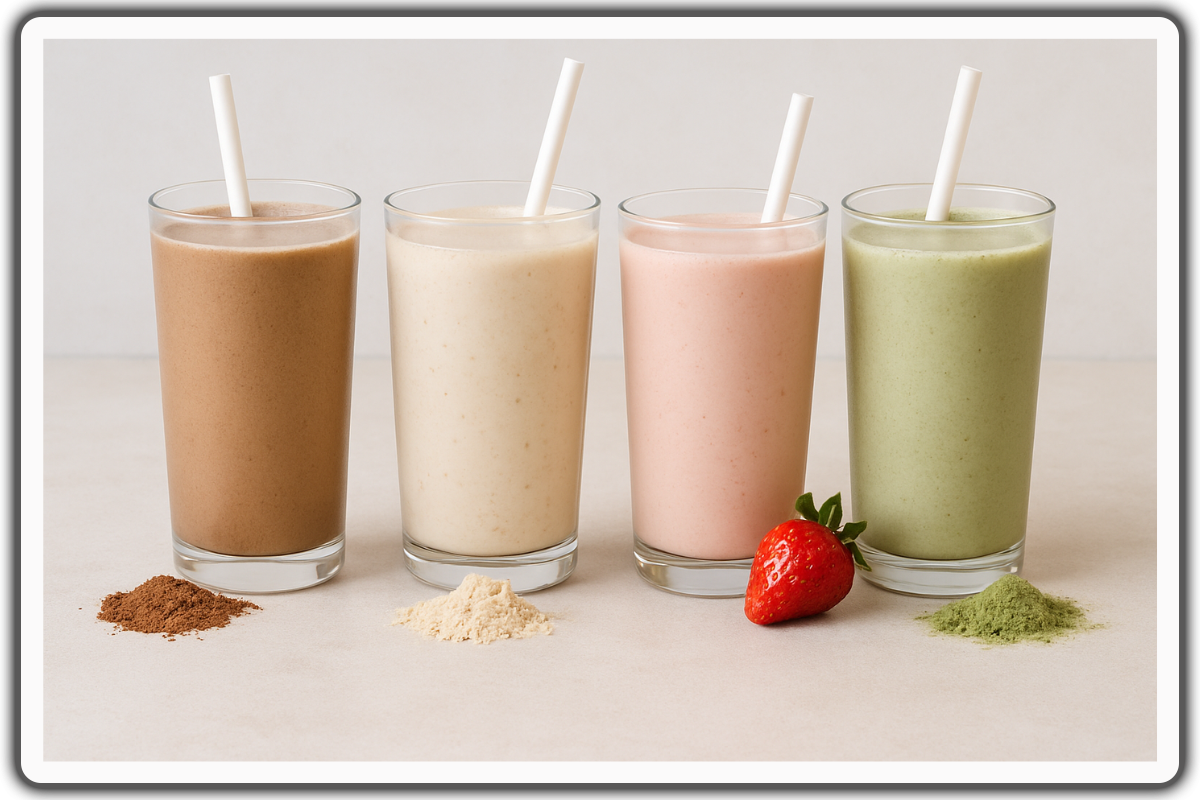
Non-Dairy Protein Shakes: Delicious Plant-Powered Recipes for Every Goal
Whether you’re cutting back on dairy, managing lactose intolerance, or following a vegan lifestyle, non-dairy protein shakes are a delicious, nutrient-packed way to boost your protein intake and support your health goals. Loaded with plant protein, fiber, and essential amino acids from well-balanced blends, these shakes help you build muscle, recover faster, and even lose weight—all without lactose, bloating, or excess added sugars. Perfect for post-workout recovery, meal replacements, or fueling busy days, they’re redefining sports nutrition and everyday wellness in the tastiest way possible.
Let’s dive into what makes plant-based protein a sustainable, nutrient-dense alternative and how you can enjoy the best flavors and nutrient profiles on the go.
🥤 Why Choose Non-Dairy Protein Shakes?
Unlike traditional whey protein or dairy protein, non-dairy protein options are made from plant protein sources such as pea protein, brown rice protein, pumpkin seed protein, and chickpea protein. These provide essential amino acids your body needs for muscle repair, tissue maintenance, and overall nutrition, minus the bloat or discomfort that comes with lactose.
Many non-dairy options are formulated to be soy-free, gluten-free, nut-free, or non-GMO, making them suitable for almost every diet and lifestyle. They’re also often shelf stable and lower in added sugars and sweetened naturally with monk fruit extract instead of cane sugar—a win for your sugar intake goals.
💪 How Much Protein Do You Really Need?
The amount of protein you need depends on your body weight, activity level, and fitness goals. Generally, a serving of protein shakes should offer 20–30 grams of protein to support muscle growth and post-workout recovery.
If your goal is to lose weight or use shakes as a meal replacement, aim for higher protein content with added prebiotic fiber and additional vitamins to help you stay full longer and fill nutrient gaps.
🌱 Best Non-Dairy Protein Sources
Here are the powerhouse ingredients often found in plant-based protein powders and drinks:
- Pea protein powder – rich in BCAAs for muscle recovery.
Brown rice protein – supports digestion and is hypoallergenic.
Pumpkin seed protein – high in minerals and essential amino acids.
Chickpea protein – great for gut health and satiety.
Chia seeds – add fiber and healthy fats for a creamy texture.
These sources are often blended with fruit and vegetable powders to add nutrients, prebiotic fiber, and natural flavor.
5 Tasty, Easy-to-Blend Recipes
🥥 1. Vanilla Bean & Chia Power Shake
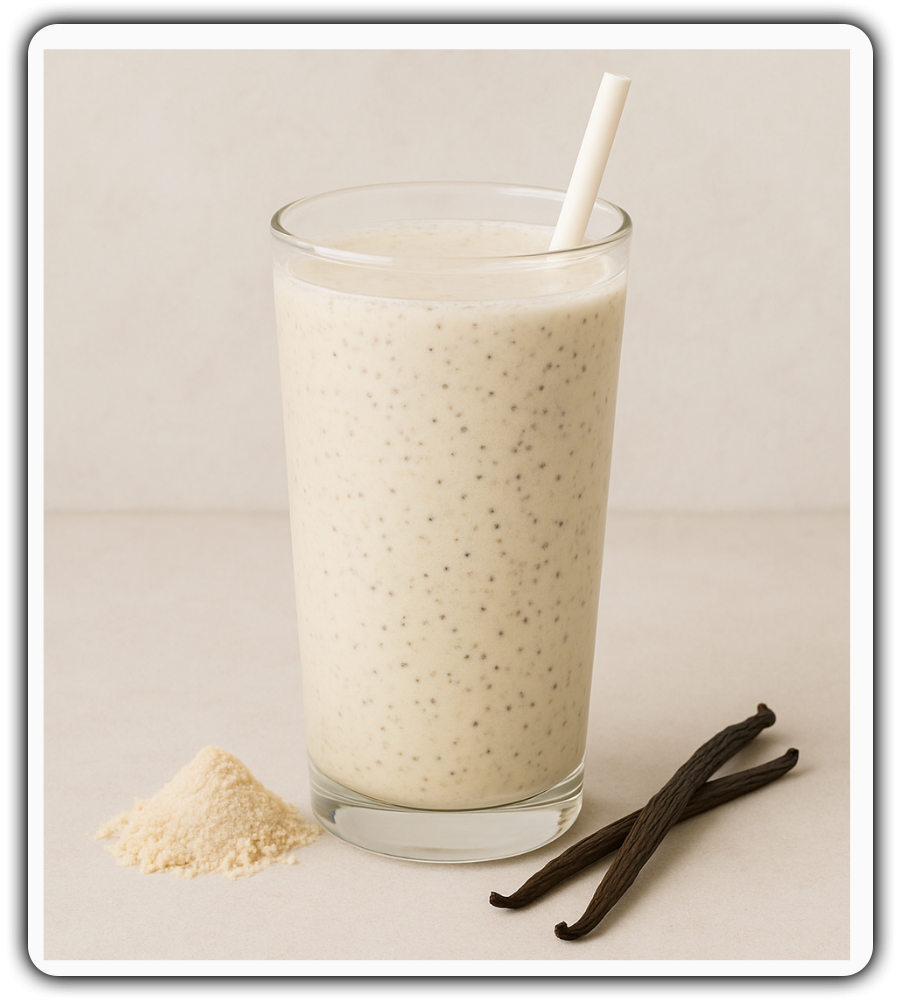
Perfect for: Meal replacement or post-workout recovery
Ingredients:
- 1 scoop pea protein powder or brown rice protein
1 cup unsweetened almond milk (or oat milk)
1 tsp vanilla bean or pure vanilla extract
1 tbsp chia seeds
½ frozen banana
½ tsp monk fruit extract (optional, for sweetness)
Ice cubes
Directions:
Blend until smooth and creamy. This shake is lactose-free, soy-free, and gluten-free—and delivers a perfect balance of protein, fiber, and minerals for gut health.
☕ 2. Cold Brew Coffee Protein Shake
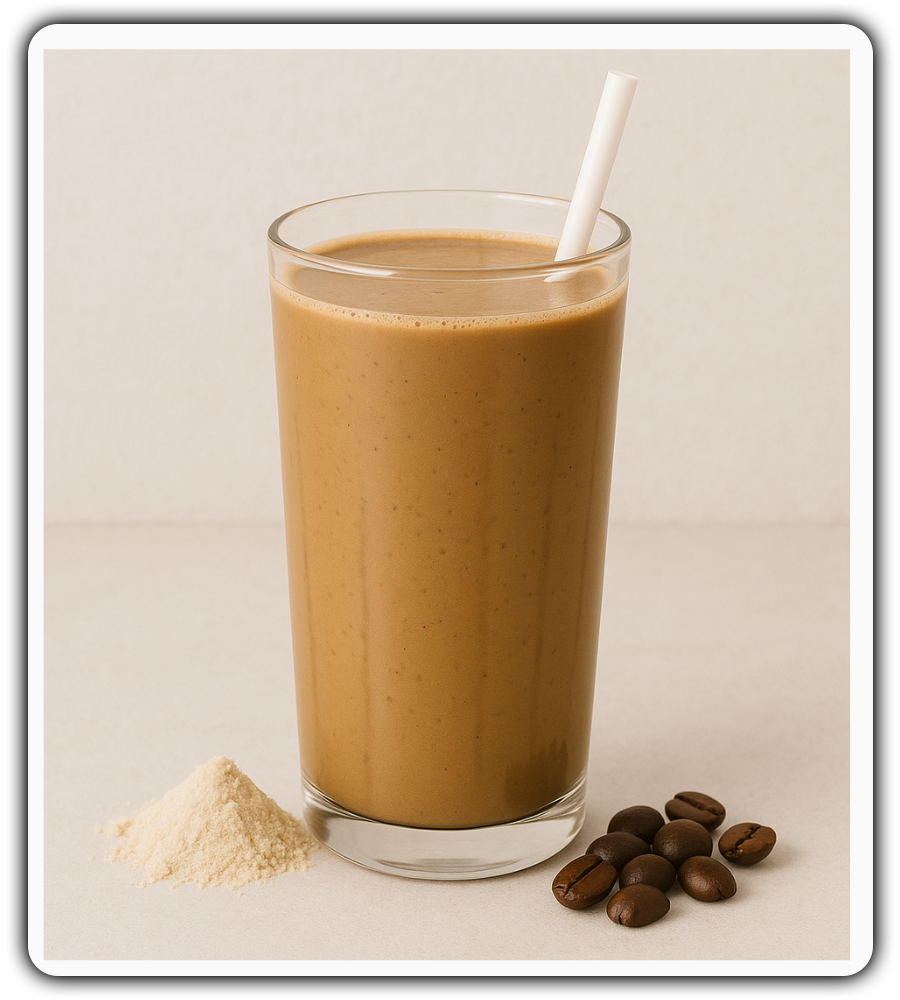
Perfect for: Morning energy and on-the-go fuel
Ingredients:
- ¾ cup cold brew coffee
¼ cup unsweetened almond milk
1 scoop pea protein or soy protein powder
1 tsp cacao bean powder
½ frozen banana
1 tsp monk fruit or a drizzle of cane sugar (if preferred)
Ice cubes
Directions:
Blend and enjoy your dairy-free, non-GMO morning pick-me-up that supports muscle growth and focus without the crash.
🍫 3. Dark Chocolate & Pumpkin Seed Shake
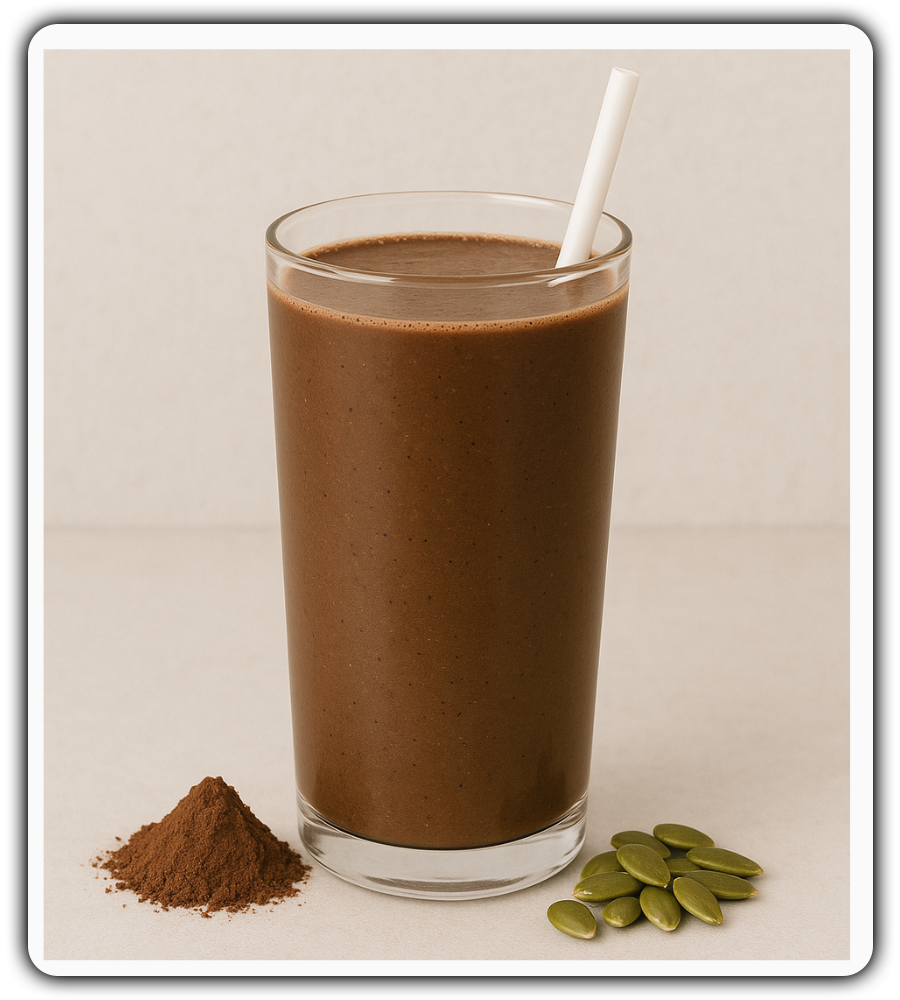
Perfect for: Post-workout recovery and muscle gains
Ingredients:
- 1 scoop pumpkin seed protein or plant-based protein blend
1 cup oat milk or coconut milk
1 tbsp dark chocolate chips or cocoa powder
1 tbsp peanut butter (optional for more protein)
½ banana or ½ avocado for creaminess
A pinch of sea salt
Directions:
Blend until velvety. Packed with essential amino acids, healthy fats, and prebiotic fiber, this shake supports muscle recovery and sports nutrition goals.
🍓 4. Berry Blast Protein Shake
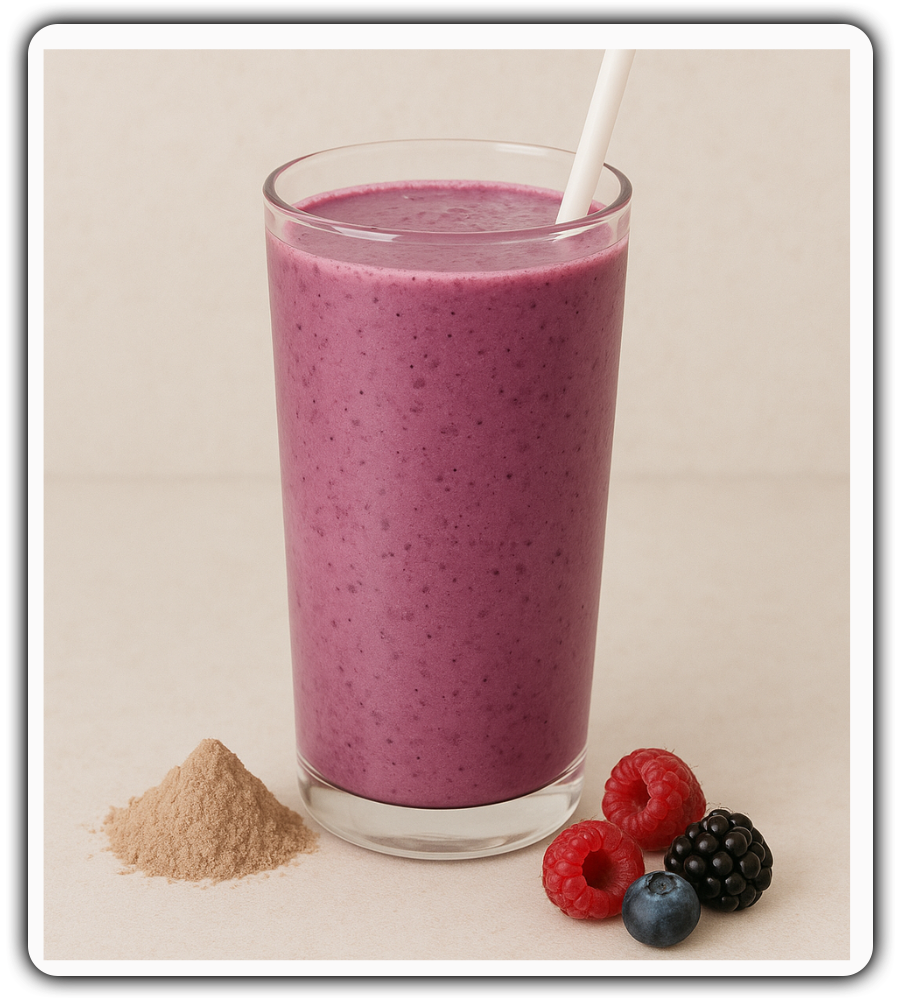
Perfect for: Snack or light meal replacement
Ingredients:
- 1 scoop plant-based protein powder
½ cup frozen berries (blueberries, strawberries, raspberries)
1 cup almond milk or soy-free milk alternative
1 handful of spinach or a fruit and vegetable blend
1 tbsp chia seeds
Optional: ½ tsp monk fruit extract
Directions:
Blend all ingredients until smooth. This vegan, nut-free, and sugar-conscious shake helps fill nutrient gaps and supports gut health.
🥜 5. Creamy Cacao & Coffee Recovery Shake
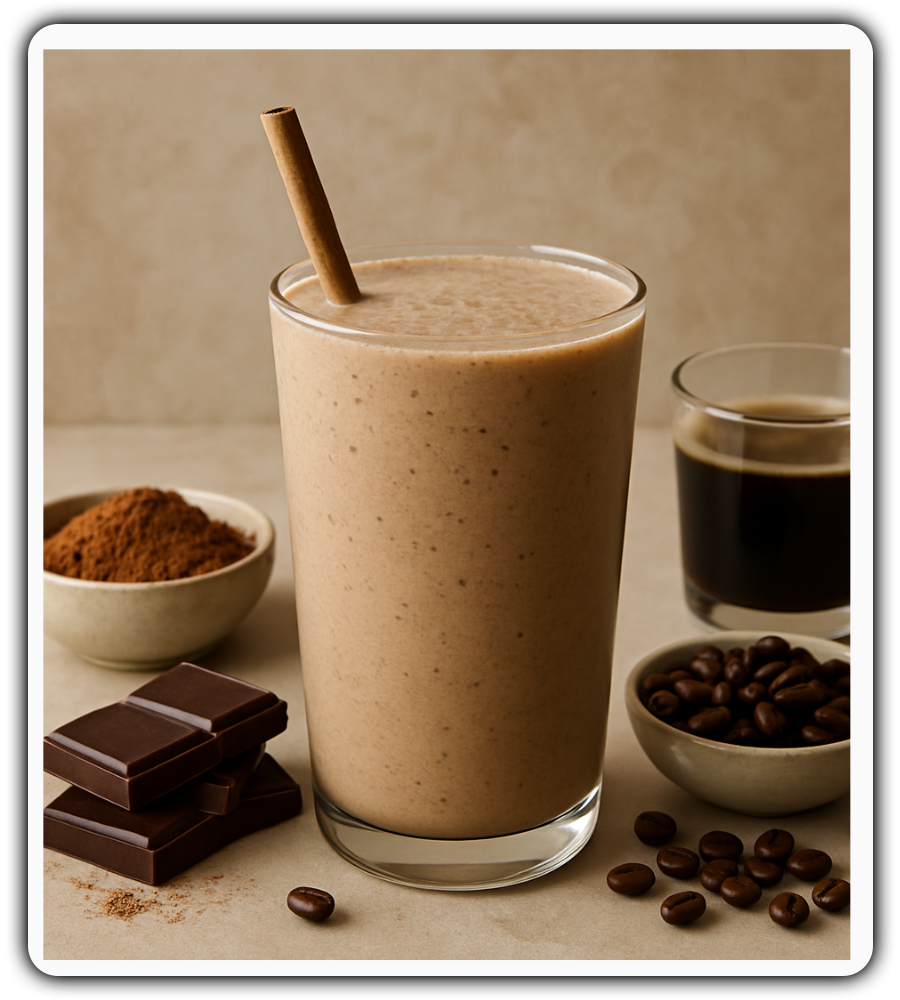
Perfect for: After workouts or mid-day energy boost
Ingredients:
- 1 scoop brown rice protein or pea protein powder
1 cup cold brew coffee
1 tbsp cacao bean or dark chocolate powder
1 tsp monk fruit for sweetness
1 tbsp chia seeds
1 tsp vanilla extract
Directions:
Blend all ingredients and enjoy chilled. Great for post-workout recovery, this shake is lactose-free, dairy-free, and soy-free, with added vitamins and fiber that support nutrition and muscle gains.
💡 Pro Tip: Boost Your Shakes with Add-Ons
Add prebiotic fiber, additional vitamins, or vegetable blends for even more nutrition. Keep shelf-stable protein drinks on hand for on-the-go convenience, or prep smoothie packs ahead of time to make your diet easier to maintain.
✅ Final Sip: Clean, Delicious, and Nutritious
These non-dairy protein shakes are perfect whether you’re vegan, lactose intolerant, or simply want great taste without dairy protein. With so many flavor options like vanilla, chocolate, or coffee, you’ll never get bored while meeting your protein content and nutrition goals.
☕️ Flavor Spotlight: From Vanilla Bean to Cold Brew Coffee
Forget the overly sweet protein shakes of the past. Today’s non-dairy protein drinks taste amazing—think vanilla bean, dark chocolate, cacao bean, or even cold brew coffee and coffee flavor for your morning pick-me-up.
Prefer something indulgent yet balanced? Try a chocolate or coffee-flavored shake with monk fruit for sweetness that’s sugar-free and great tasting.
🏃♀️ When to Drink Non-Dairy Protein Shakes
These protein drinks are perfect for:
- Post-workout recovery – replenish nutrients and support muscle repair after training
On-the-go nutrition—keep a shelf-stable shake handy for busy days.
Meal replacement—blend with fiber, carbs, and additional vitamins for a balanced drink.
Snacks—satisfy cravings without extra sugar or carbs.
Lara Clevenger, M.S., RDN, CPT—an American registered dietitian—offers a useful perspective in her article “The Ultimate Guide to Dairy-Free Protein Shakes” on ForDietitians: she emphasizes that while dairy-free protein shakes are a great tool, they should complement—not replace—whole foods. She also advises that people choosing dairy-free options pay close attention to protein quality, ingredient transparency, and added sugars. In short: shakes can help fill nutrition gaps, especially for those avoiding dairy or managing lactose intolerance—but they are most effective when paired with a balanced diet.
🌟 The Bottom Line: Great Taste, Better Health
With options that are dairy-free, lactose-free, soy-free, and non-GMO, non-dairy protein shakes make it easy to stay fueled, fit, and healthy—without compromising flavor. Whether you’re chasing muscle gains, maintaining body weight, or simply wanting to eat well and feel great while staying plant-based, there’s a shake for you.
So grab your blender or a ready-to-drink bottle, pick your favorite flavor—from vanilla to coffee to dark chocolate—and power your day with plant-based protein that’s better for the planet when sustainably sourced, as it is for you
FAQs
1. Are nondairy protein shakes good for weight loss?
Yes. They help reduce cravings and support fullness, especially when used as a balanced meal or snack.
2. How much protein should I get per shake?
Aim for 20–30 g of protein per shake to support muscle recovery and daily nutrition.
3. Do plant-based proteins have all essential amino acids?
Yes—especially blends like pea and brown rice or soy protein, which provide complete amino acid profiles.
4. Can I drink them every day?
Yes, but don’t rely on them exclusively—combine them with whole foods for fiber and variety.
5. What should I look for on the label?
Pick shakes that are low in added sugar, soy-free, and non-GMO and have natural ingredients with added vitamins for balanced nutrition.
KW References:
- Lactose Intolerance
non-GMO
prebiotic fiber
References
1- Lactose Intolerance
picture_as_pdfPDFprintPrintcommentComments
DANIEL L. SWAGERTY, JR., M.D., M.P.H., ANNE D. WALLING, M.D., AND ROBERT M. KLEIN, PH.D.
2- GMO and Non-GMO Labeling Effects: Evidence from a Quasi-Natural Experiment
Aaron Adalja , Jūra Liaukonytė , Emily Wang, Xinrong Zhu
Published Online:29 Aug 2022 https://doi.org/10.1287/mksc.2022.1375
3- Chapter Two - Health Benefits of Prebiotic Fibers
Author links open overlay panel
Diederick Meyer
https://doi.org/10.1016/bs.afnr.2014.11.002
